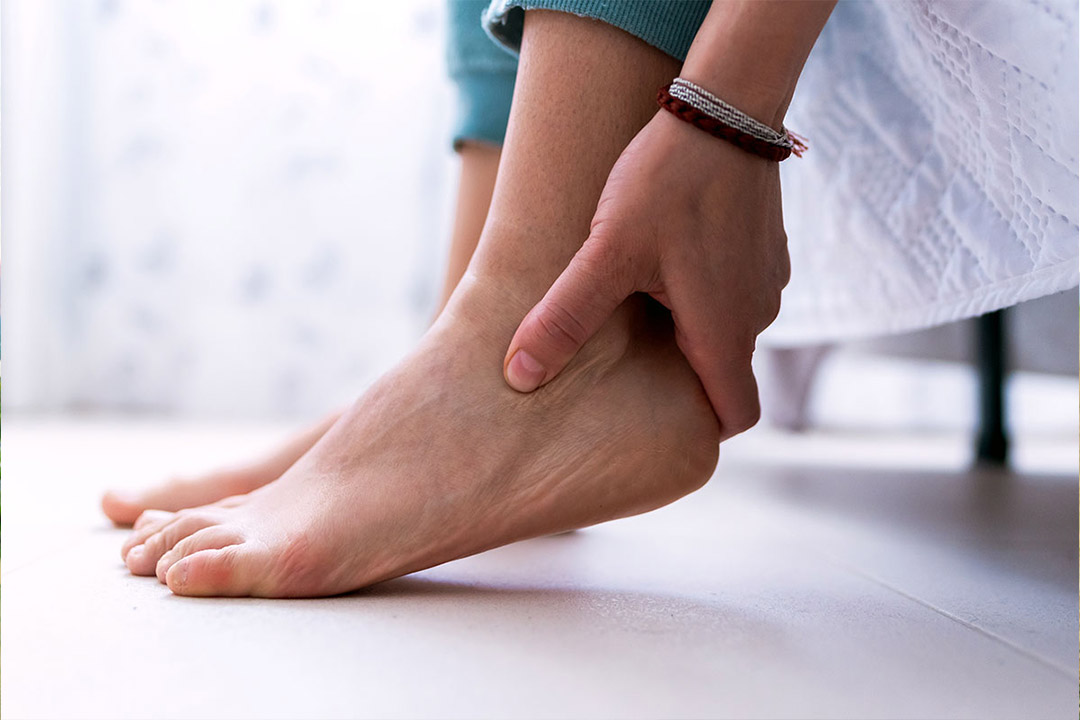What is podiatry?
Podiatry is the branch of medicine focused on the diagnosis, treatment and prevention of conditions affecting the feet, ankles and lower legs. A medical professional who practices podiatry is called a podiatrist, or sometimes a foot doctor.
A podiatrist can treat foot and ankle conditions, perform surgery, treat sports injuries and pediatric foot issues and care for wounds, especially in patients with diabetes or poor circulation.
Podiatry services
Our highly skilled team provides podiatry services for:
- Musculoskeletal conditions including arthritis, bunions, bone spurs, fractures, sprains and more
- Nerve conditions like diabetic neuropathy and nerve pain
- Skin conditions such as corns, calluses, ingrown toenails, moles and warts
- Sports injuries including ankle and foot conditions requiring surgery
- Supportive and preventive care such as corrective footwear and orthotics
- Systemic conditions like diabetes-related foot concerns and gout
- Wound care such as foot ulcers and sores
Podiatry FAQ
Tinea pedis, commonly known as athlete’s foot, is a very common condition caused by fungus growing between the toes or on the feet. It can cause discomfort but is usually easy to treat.
- Common symptoms: Itching, burning, peeling skin between toes
- Treatment: Antifungal creams or sprays, keeping feet dry, avoiding being barefoot in public areas
These are different types of bumps, swellings or hardening of the skin of the feet or toes that can cause pain or discomfort while walking.
Bunions
- Common symptoms: A bony bump at the base of the big toe, often accompanied by pain or swelling
- Treatment: Proper footwear, pads, orthotics, surgery in severe cases
Calluses and corns
- Common symptoms: Thick, hardened skin on the toes or soles that can be painful
- Treatment: Padding, proper footwear, debridement by a podiatrist
Diabetes can have a serious impact on foot health, often leading to complications that may result in ulcers, infections or even amputation if left untreated.
Diabetes affects the feet due to:
- Foot ulcers
- Nerve damage (diabetic neuropathy)
- Poor circulation (peripheral arterial disease)
- Skin and nail changes
- Structural changes
Here are some tips to help keep your feet healthy:
- Check your feet daily for cuts, blisters, swelling or color changes.
- Control blood sugar levels to prevent or slow nerve and vessel damage.
- Never go barefoot, even indoors.
- See a podiatrist regularly, especially if you’ve had foot issues before.
- Trim toenails carefully or have a podiatrist do it.
- Wash and moisturize your feet daily (but not between the toes).
- Wear properly fitted shoes and consider diabetic footwear
Diabetic neuropathy is a term meaning nerve damage caused by diabetes. It can affect many parts of the body, including the feet, ankles and legs.
- Common symptoms: Numbness, tingling, pain, ulcers, slow healing
- Treatment: Blood sugar control, regular foot exams, wound care, protective footwear
To reduce swelling, podiatrists recommend a combination of home remedies, lifestyle changes and medical care depending on the cause and severity.
Here are some recommendations:
- Apply cold therapy.
- Cut back on salt in your diet.
- Do regular gentle exercise.
- Eat a magnesium-rich diet.
- Elevate your feet.
- Get regular foot massages.
- Stay hydrated.
- Wear compression socks.
A foot ulcer is an open sore that develops on the bottom of the foot or toes. It’s especially common in people with diabetes due to complications like neuropathy (nerve damage) and poor circulation, which slow down healing and reduce the ability to feel injuries.
How long it takes for foot ulcers to heal depends on severity, infection and treatment:
- Mild ulcers: 2-4 weeks with proper care
- Moderate to severe ulcers: Several months
- Chronic or infected ulcers: A year or more to heal, or may require surgery
Heel spurs and plantar fasciitis are two common causes of foot pain. While the symptoms can be similar, they are two separate conditions and require the correct diagnosis and treatment.
Heel spurs
- Common symptoms: Heel pain, especially with walking or standing
- Treatment: Rest, ice, orthotics, corticosteroid injections, surgery if needed
Plantar fasciitis
- Common symptoms: Sharp heel pain, especially in the morning or after rest
- Treatment: Stretching, orthotics, night splints, NSAIDs, physical therapy
The right footwear is important, especially for those with:
- Bunions
- Flat feet
- Neuropathy
- Plantar fasciitis
Check with your podiatrist to see what kind of footwear is right for you. Look for brands that have arch support, cushioning and foot alignment.
Helpful resources

Article
Tips for preventing and treating the top causes of foot pain
Aching, throbbing and swelling in your feet could be a sign of certain medical conditions that can worsen foot pain.

Article
Dehydration symptoms: How to spot the signs of dehydration
Not getting enough fluids can cause you to lose focus or make you more tired. Even slight dehydration can lead to serious health issues.

Article
How to stop prediabetes: 5 steps to help
You may be able to reverse prediabetes by changing some daily habits like exercising more often and eating a balanced diet.
Optum arranges for or provides medical and other clinical services in accordance with laws in each state it operates. Physicians or providers referenced on this website are to those who are either part of independent practices or to those medical practices managed by or owned, where permitted, by Optum. In all circumstances, physicians and other licensed professionals have complete authority for all medical decision-making and patient care. Optum does not determine or set the methods, standards, or conduct of the practice of medicine or health care provided by any of the practices or their physicians or other licensed professionals.
*Podiatry services vary by location. Check with your doctor’s office or health plan for specific information.




